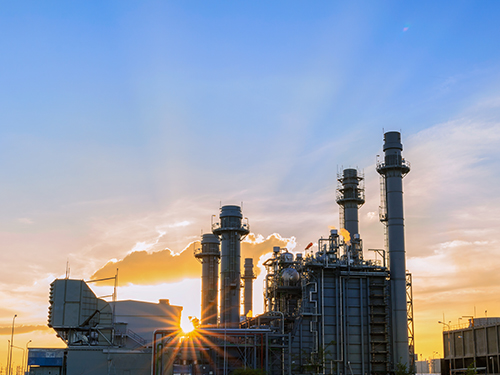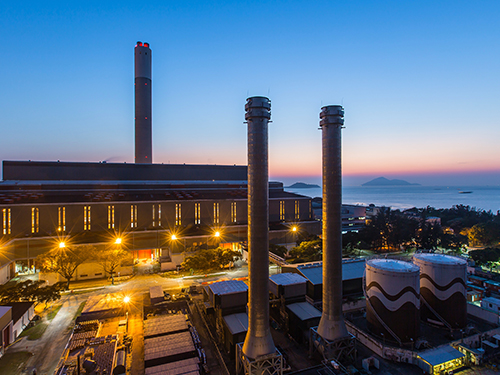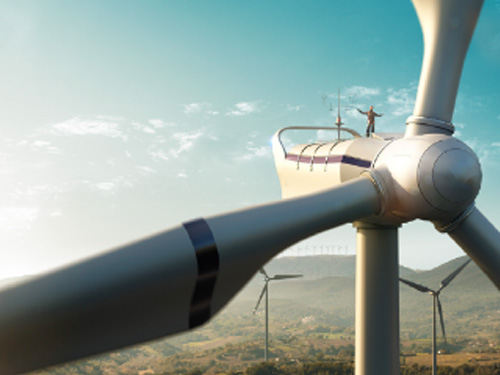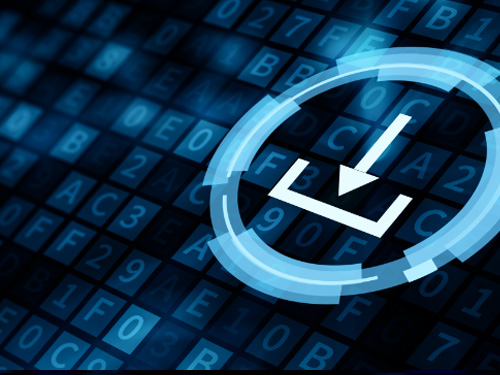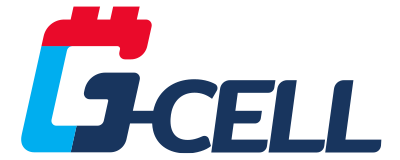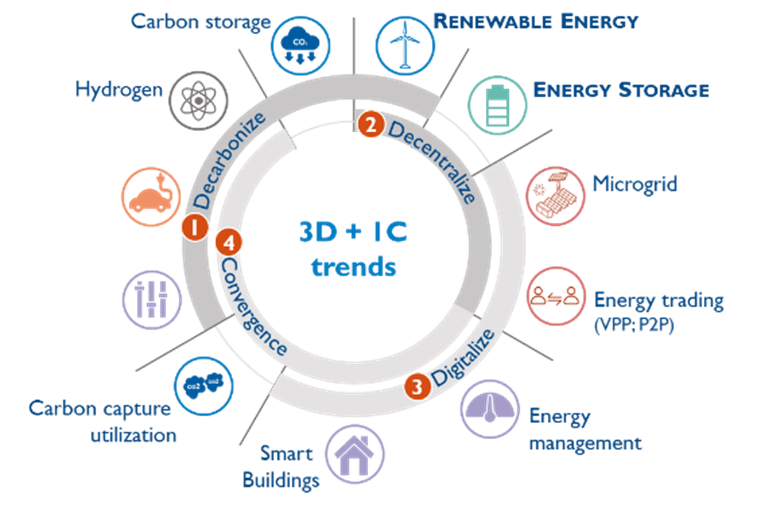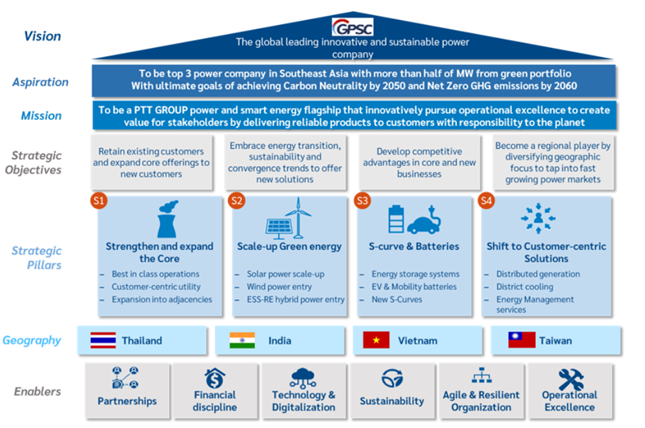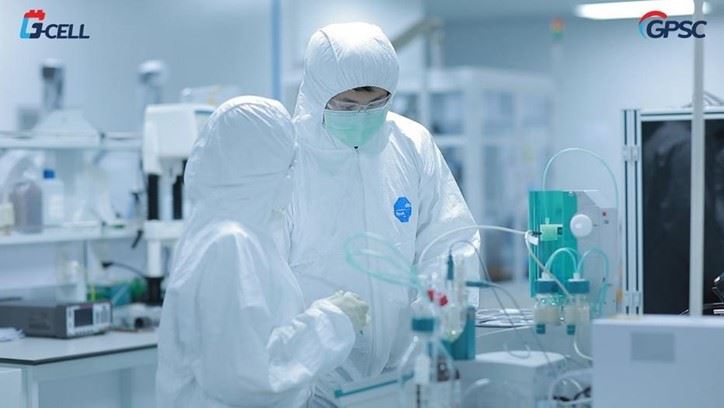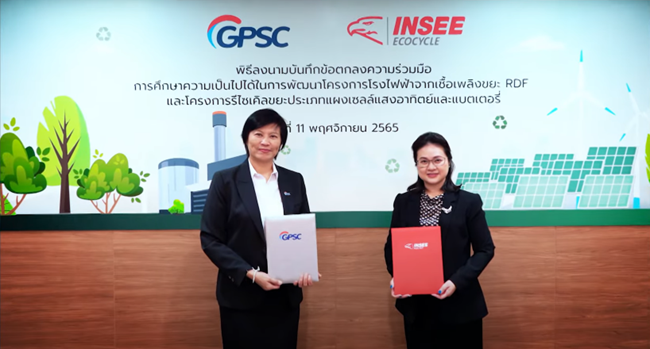Collaboration in Support of Innovation Research and Development
GRI 203-1
GPSC recognizes the importance of cooperation between agencies to encourage innovation commercialization and foresees an opportunity for open innovations to serve as a way for receiving and exchanging knowledge, ideas, and experiences from and with external parties in order to add value or create new products that enhance GPSC’s competitiveness and energy innovation. GPSC focuses on innovation research and development through various collaborations. Relevant projects are as follows:
Development of the first floating solar in Thailand (G-Float)

In collaboration with a company in PTT Group and Combined Heat and Power Producing Company Limited (CHPP), GPSC has developed a pilot project for the installation of a floating solar known as G-Float – a commercial floating solar buoy catering to industrial customers, government agencies, and private organizations wising to adopt renewable energy.
Designed to maximize electricity production efficiency, G-Float is made of innovative high-density polyethylene with special properties, such as flexibility, strength, and durability and is non-toxic to marine life as well as can reduce barnacle buildups. Easy to install and maintain, G-Float supports various solar panel models from the standard size to larger and heavier ones, and the material is recyclable and boasts a service lifespan of 25 years.
Efficiency enhancement benefits
- Service life extended to 25 years
- Enhanced electricity production efficiency thanks to materials with greater corrosion resistance
Revenue increase and cost reduction benefits
- 390,000 baht saved in electricity costs (for the installed capacity of 100 kW)
- 7.8 million baht saved throughout service life
Human resource and innovation benefits
- Opportunities for personnel to enhance capabilities, skills, and experience on floating solar
Other benefits
- 36 tonsCO2eq of greenhouse gas (GHG) emissions reduced per year and over 725 tonsCO2eq per year throughout service life
- The plastic resin in the product has no impact on marine ecosystems (certified by the United States Food and Drug Administration)
- The project can serve as a case study for communities interested in solar power systems.
Smart Energy Community at Vidyasirimedhi Institute of Science and Technology (VISTEC)
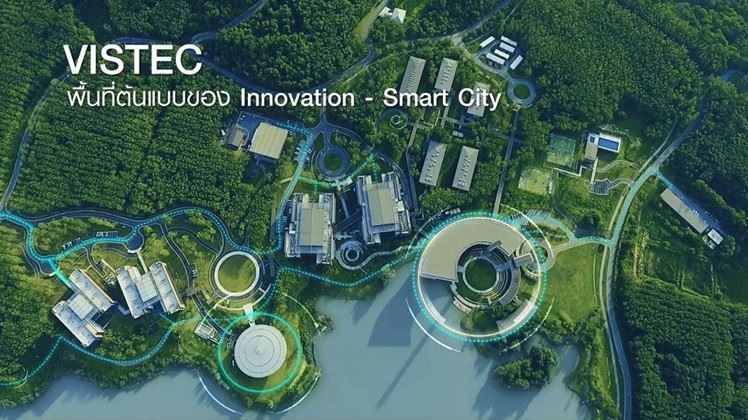
GPSC has partnered with PTT Public Company Limited to study and develop a smart energy management system through the use of various technologies at Vidyasirimedhi Institute of Science and Technology (VISTEC). Under this collaboration, new energy technologies and innovations are studied to create guidelines for further development and real-life applications in the future, such as reliable power production using solar rooftops and floating solar, the use of energy storage systems (ESSs) to optimize renewable energy systems, and the adoption of artificial intelligence (AI) to analyze electricity production, storage, and distribution, as well as the use of blockchain for digital peer-to-peer (P2P) on-grid power purchase between facilities through smart contracts, which will obviate intermediaries and display results in real time.
Efficiency benefits
- Over 38.5% increase in renewable energy production in buildings
Revenue increase and cost reduction benefits
- 1.75 million baht in expected income from solar energy system installation in the first phase, with an additional 4.16 million baht expected in 2021, totaling 5.8 million baht
Human resource and innovation benefits
- Renewable energy knowledge and skills enhancement for further investments in the future
- Employees can access new technologies and innovations, such solar rooftops, floating solar, and ESSs
- The collaboration supports GPSC’s main policies to push forward the use of green technology and contribute to neighboring communities.
- The collaboration provides a case study of innovations in the electricity business and guidelines for developing various energy management approaches in the future.
Other benefits
- 1,211,306 tonsCO2eq of greenhouse gas (GHG) emissions reduced per year
- A renewable energy learning center has been established for communities.
- A good relationship has been fostered between GPSC and surrounding communities.
- VISTEC students are encouraged to take part in learning and experimenting with innovations.
Battery Innovation of the Future: G-Cell Battery
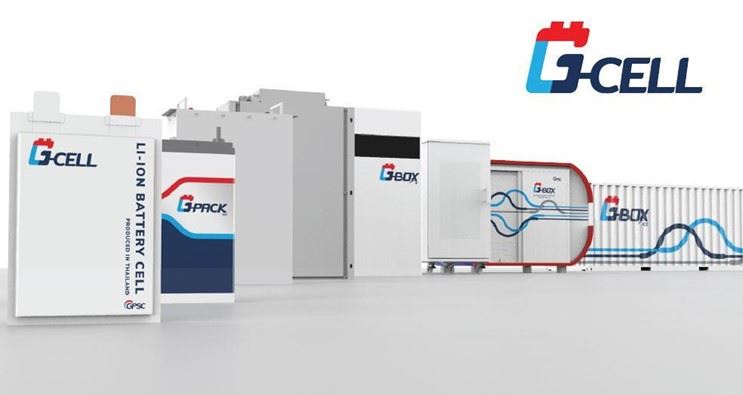
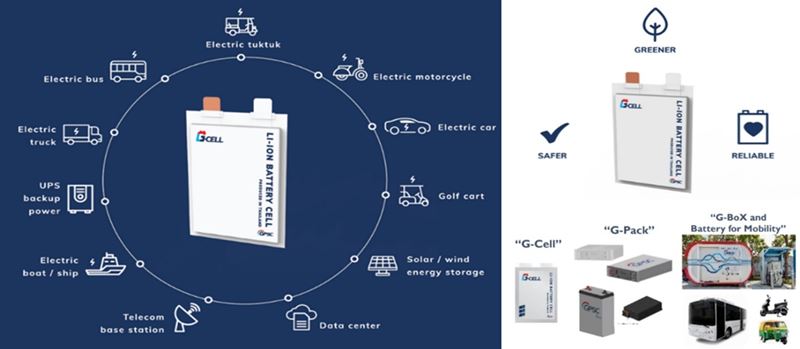
GPSC has partnered with 24M Technologies, Inc., a US-based expert specializing in lithium-ion batteries, to research and develop a semi-solid battery known as G-Cell to support commercial expansion. It is distinguished by its long service life, recharging cycles of 1000-10,000 times, and its storage time of up to 350 days, which is 1.2 times longer than conventional lithium batteries. G-Cell can also regulate its own temperature even in a high-temperature environment to reduce the chance of a short circuit within the battery. G-Cell is also lightweight and environmentally friendly as it does not contain any binder, making it easier to recycle and allowing it to be recycled at a lower cost than other types of batteries.
G-Cell can be applied to a wide range of products, both stationary and mobile, through modifications into products such as G-Pack and G-Box. G-Cell is also compatible with future technologies, such as charging station systems, telecommunication systems, and data centers that require stable electric power distribution.
Efficiency enhancement benefits
- 50% reduction in production time and costs
- 30% reduction in coatings for battery components, making the battery more recyclable
Revenue increase and cost reduction benefits
- 2,500 million baht in revenue expected from G-Cell based on the production capacity of 1 GWh
- Approximately 3,000 baht generated in income per GWh in 2025
- 23% reduction in import taxes due to reduced ESS imports
Human resource and innovation benefits
- Employee skill enhancement through research collaboration with international ESS experts
- Elevation of ESS development in Southeast Asia
Other benefits
- High-safety batteries with temperature control in the high-temperature environment of Southeast Asia
- Over 40% reduction in coatings for battery components than usual, making the battery more recyclable, in line with circular economy principles
